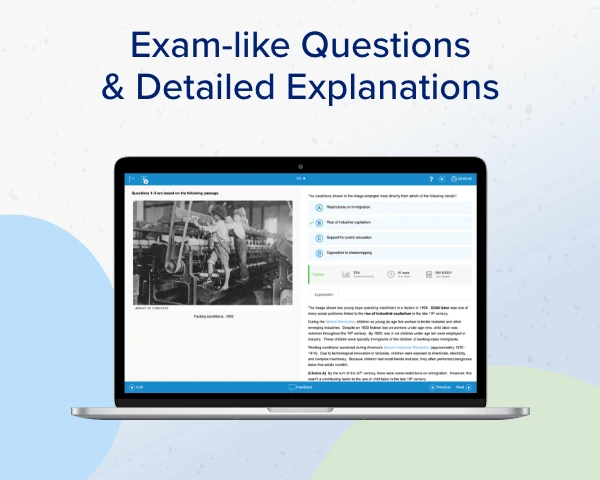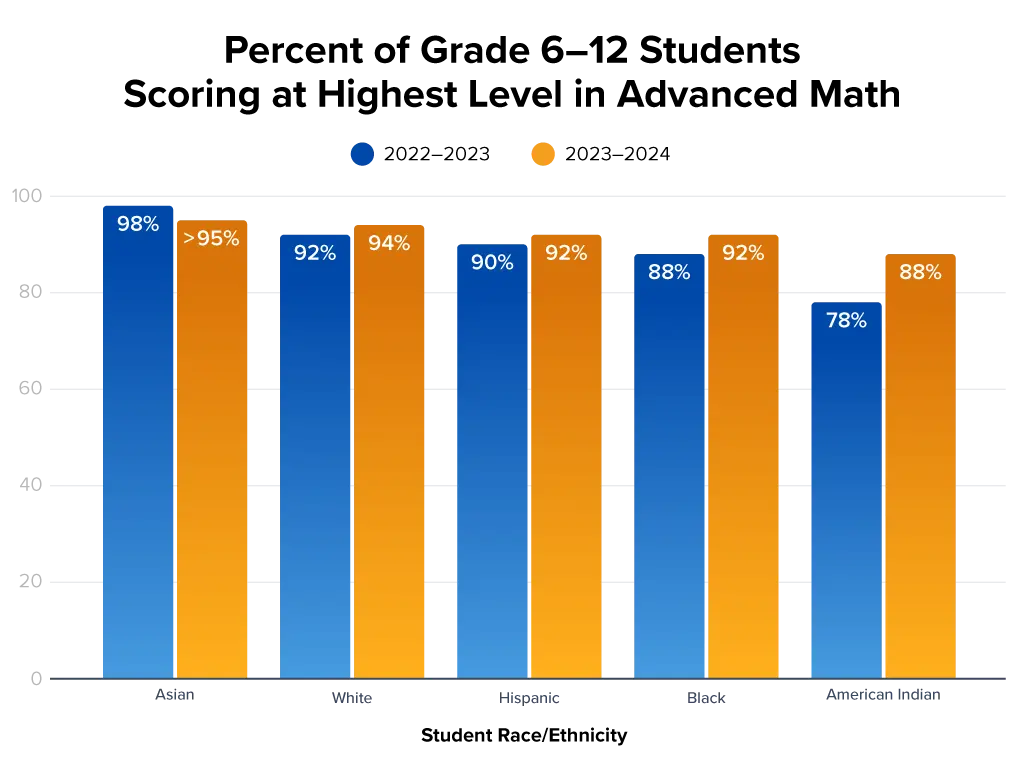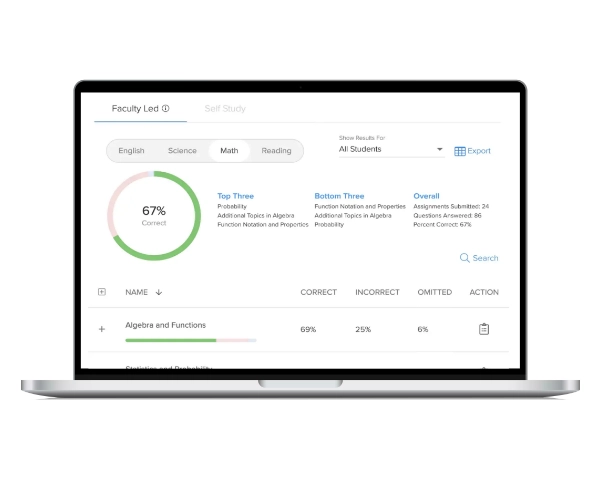Decades of research show that students of color face systemic barriers that result in underrepresentation in Advanced Placement® (AP) courses. In fact, Black students make up 15% of the student population but only 9.5% of students enrolled in AP courses.
AP automatic enrollment can address this issue by granting equal access to challenging academic opportunities. Educators can support this initiative by utilizing tools that provide the necessary support for all students to succeed. Let's explore the benefits, challenges, and strategies that will open the door to advanced learning opportunities for all students.
What Is AP Automatic Enrollment?
AP automatic enrollment is a policy that automatically enrolls students in rigorous AP courses if they perform well in their prerequisite classes or on standardized tests. This approach aims to eliminate biases and ensure that all students with academic potential are given equal opportunities.

Benefits of AP Automatic Enrollment
Automatic AP enrollment enhances college readiness, driving success for students and schools. The policy strives to:
- Create Equitable Access: Enrolls all qualified students in AP courses, reducing biases.
- Improve Performance: Prepares students for college-level coursework, helping them reach their full potential.
- Enhance School Reputation and Resources: Increases AP participation, boosting academic standing and motivating students.
- Support Diverse Classrooms: Promotes a richer learning experience for underrepresented students.
Case Study on AP Automatic Enrollment Programs
A study from the Johns Hopkins School of Education highlights the benefits of automatic enrollment policies. By implementing an AP automatic enrollment policy, schools can boost educational excellence and ensure qualified students are placed in advanced coursework.
District data from North Carolina supports these findings, showing that 92% of high-achieving students in Grades 6 and above were placed in advanced math courses in the 2022-232 school year. This increased to 94% in 2023-24, demonstrating the success of introducing an automatic enrollment policy, which encourages more students to take advanced courses.

Challenges of AP Automatic Enrollment
Implementing a district-wide policy for AP enrollment has clear benefits, but addressing the challenges is key to ensuring that all students receive the support and guidance they need.
Student Readiness
Preparing students for the intensity of AP courses is critical. To improve student readiness, schools should implement:
- Comprehensive academic support systems such as targeted tutoring
- In-class differentiated instruction
- Quality instructional resources to extend and remediate instruction
- Counseling services
Additionally, providing students with clear expectations, study skills workshops, and access to quality AP resources can significantly enhance their readiness for success.
"Advanced coursework opportunities can place students on the path toward college and career success. Yet, too many Black and Latino students never receive the opportunity to enroll through no fault of their own."
-Kayla Patrick, ED Trust P-12 Data and Policy Analyst 3
Teacher Preparedness
Teachers must be well-prepared to support students with different levels of readiness. Opportunities for continuous professional development and familiarization with the latest high-quality teaching and learning AP resources are important to refreshing expectations and instructional strategies.
Balancing Rigor and Accessibility
Finding the right balance between not having strict prerequisites and ensuring that students are ready for the challenge is a delicate task. You can use data-driven insights to identify students who may need additional help. Offer targeted support, such as small group settings or individualized instruction, to get them ready for the rigor of AP coursework.

How to Make AP Automatic Enrollment Work
Looking to correctly implement automatic enrollment for your AP students?
Start by identifying students with potential through multiple data points such as grades, test scores, and interest surveys. Relying on data-driven criteria will help prevent bias and provide a more equitable process for all students.7 Plus, it increases the likelihood that students are placed in AP courses that align with their academic abilities and interests.
Additionally, expose students and their families to the benefits of participating in AP courses to get them excited about the opportunities available to them.
Here are key strategies to ensure a seamless transition to automatic enrollment for AP courses.
Define Teacher and Counselor Roles
Teachers and counselors play a vital role in the success of automatic AP enrollment by:
- Utilizing the AP Potential Report:
This tool helps identify students who are likely to succeed in AP courses based on their PSAT/NMSQT® scores. - Providing Academic Support:
Teachers and counselors should offer additional support to students, including tutoring and study sessions. - Encouraging and Motivating:
Motivating students to embrace the challenge of AP courses is key. Positive reinforcement and clear academic goals can help. - Staying Updated:
Stay informed on the latest AP resources to provide the best support. Attend AP Summer Institutes (APSI)1 and keep up with the latest changes reported by the College Board® 4 to provide the best support for students.
Maximize Student Success
Improving student success in AP courses involves:
- Identifying Strengths:
Use data to pinpoint areas of success for students. This information can help determine which AP classes they may be most successful in. - Avoiding Staff Bias:
Use multiple data points, such as grades, test scores, and interest surveys, to determine enrollment and ensure an unbiased selection process. - Tailoring Support:
Customize learning plans and resources to meet individual student needs. - Monitoring Progress:
Regularly track student performance and adjust strategies as needed to ensure continued success.
Enhancing Equity and Excellence Through AP Automatic Enrollment
Embracing automatic enrollment for AP courses is more than just a policy shift. It's a commitment to equity and academic excellence. Schools can tackle barriers that prevent access for students from diverse backgrounds by automatically placing them into advanced courses after they demonstrate proficiency.5 This proactive approach guarantees that all students have the chance to excel in challenging coursework.
To execute this strategy, schools should utilize data to identify student readiness, provide focused support, and cultivate an inclusive culture.6 By doing so, you will reinforce your school's commitment to reducing achievement gaps and fostering academic success.8

References
1 AP Summer Institutes: https://apcentral.collegeboard.org/professional-learning/summer-institutes
2 North Carolina General Assembly: https://webservices.ncleg.gov/ViewDocSiteFile/84604
3 The Education Trust: https://edtrust.org/resource/questions-automatic-enrollment-policies/
5 Dallas ISD News Club: https://thehub.dallasisd.org/2020/12/10/district-aims-to-increase-black-students-and-english-language-learners-in-ap-courses/
6 American Consortium for Equity in Education: https://www.ace-ed.org/jonathan-a-plucker-automatic-enrollment-is-a-no-brainer/
7 Ed Allies: https://edalliesmn.org/blog/make-rigorous-education-the-default-through-automatic-enrollment/
8 The Education Trust: https://edtrust.org/resource/questions-automatic-enrollment-policies/




